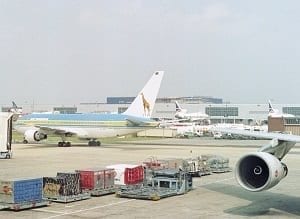Africa needs safe, efficient and affordable air transport links to make the most of its people and resources. It is no easy task, says IATA’s Tony Tyler.
The all-accident rate in Africa last year was 11.18 for every million flights, far higher than the global average of 1.92. As at October last year, only 17 out of 54 African States complied with 60% or more International Civil Aviation Organization (ICAO) Standards and Recommended Practices. National civil aviation authorities need to be given greater resources and operational independence and, where necessary, must rely on regional pooling initiatives across the continent to promote safety. With government commitment, the adoption of global best practices, and the continued vigilance and excellence of Africa’s aviation professionals, there’s no reason why Africa cannot match the levels of safety enjoyed in other regions of the world. Two important pieces of regulation African states need to adopt without delay are the Montreal Convention 1999 (MC99) and the Montreal Protocol 2014 (MP14). MC99 establishes a standard approach to airline liability, delivering benefits to all stakeholders without creating a regulatory burden. It provides better protection and compensation to passengers, and provides the legal framework for digital invoicing, meaning faster shipments for time-sensitive goods. Together with initiatives already undertaken by airlines to prevent and manage unruly passengers, MP14 will act as a deterrent, giving states the legal powers they need to take action. Unfortunately, implementation of the Yamoussoukro Decision (YD) has been slow, and the benefits have not been fully realised. The logic for opening Africa’s skies is inescapable, and it is very encouraging to see the states of the African Union commit themselves to implementing YD by 2017.African states are urged to accede to and implement the World Trade Organization’s Trade Facilitation Agreement (TFA), which offers enormous potential to reduce transport costs by expediting air cargo through smart borders, which the TFA sets down clear and practical provisions to establish.
Unfortunately, African airlines do not have a strong profitability record because the cost of doing business in Africa is too high. Fuel, for example, costs, on average, around 20% more than elsewhere in the world. Jet fuel taxes, passenger taxes, solidarity taxes, tourism taxes, fiscal stamp taxes, value-added taxes, sales taxes, and transportation taxes all add up to a costly burden on the continent’s airlines. Investment is needed to create the right airport and air navigation facilities to ensure the expected growth in passenger numbers and that aircraft movements can be accommodated. But investments must be considered wisely and decided in close consultation with airlines. In Africa, cross-subsidy and pre-funding, which are forbidden and strongly discouraged under ICAO rules, are all too prevalent. Even where much-needed investment is being put in, we have concerns on the levels of expenditure. Airlines have a right to be consulted in detail when you consider the spending of a billion dollars in Ndjamena, three billion dollars in Addis Ababa, and three-quarters of a billion dollars in Dakar. Some states are getting it right; although its airport development charge remains too high, Senegal moved to reduce airport and passenger taxes earlier this year. Over-investment will cripple the industry with a cost burden that will weigh down air connectivity. If African governments were to take the lead in genuinely consulting the users of the infrastructure before it gets funded, built or operated, they would soon find themselves with the right mix of facilities, growing lock-step with demand, providing the right level of world-class quality, and at the right price to maximise growth.







